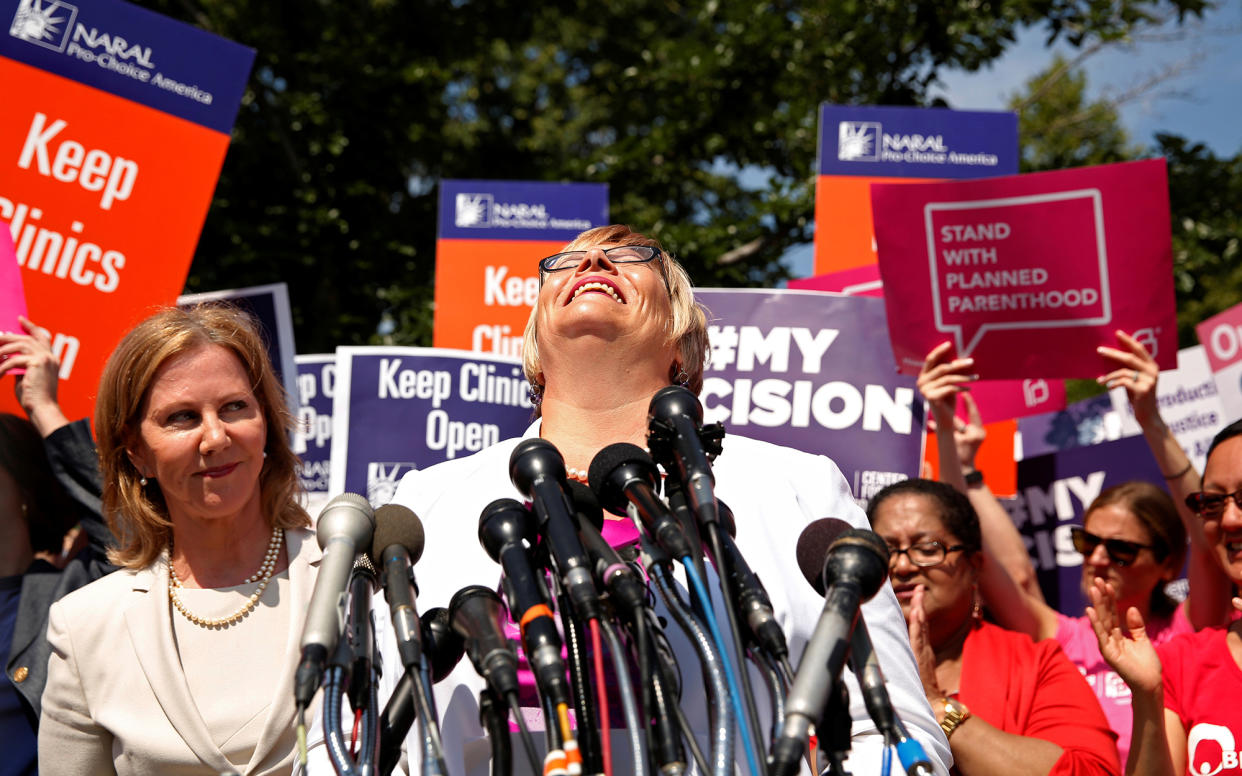Shuttered Texas abortion providers face long road to reopening, despite Supreme Court victory

It is just as difficult to get an abortion in Texas today as it was yesterday, and that will likely be true for a long time to come, providers across the state say.
Monday’s Supreme Court ruling striking down obstacles the state had put in the way of doctors and clinics was “a huge victory” said Amy Hagstrom Miller, founder, president and CEO of Whole Woman’s Health, the named plaintiff in the suit, but “the clinics that closed aren’t going to reopen overnight. The process will take quite a bit of time.”
Three years ago there were 40 abortion providers in Texas. Then, in July of 2013, the Legislature passed a bill known as HB2, which required that doctors performing the procedure have admitting privileges at a nearby hospital and that clinics be equipped like ambulatory surgical centers. Once that bill took effect, more than half the Texas clinics closed almost overnight. A series of court fights and injunctions allowed 19 to remain open, and that is the total today. They are sprinkled throughout the sprawling state at such wide intervals that some women have to travel hundreds of miles to obtain an abortion.
It is unclear how many of the closed clinics will be able to reopen, said Yvonne Gutierrez, director of Planned Parenthood Texas, the policy and advocacy arm of the organization. “As health centers closed across the state, they had to sell buildings, let go of leases, let go of staff members who now have other jobs,” she says. Reopening means finding new locations, new employees and, most importantly, getting new licenses to operate. “It’s not as though we have this ruling from the Supreme Court and click, lights back on,” she said.
Hagstrom Miller said she hopes to reopen the clinics she had to close. Whole Woman’s Health operates in five states and had six sites in Texas before the new law went into effect. Now there are four. The Beaumont clinic closed completely. One of two Austin clinics closed, and Hagstrom Miller kept the space open as a workspace for those working on the legal challenges to HB2. Clinics in McAllen, Fort Worth and San Antonio remain open. The McAllen location – the only place where abortion is available in the entire Rio Grande Valley – closed, then reopened after the Supreme Court issued an injunction in 2014.
Speaking by phone from Texas, having just arrived home from a trip to Washington where she heard Justice Stephen Breyer read the Whole Woman’s Health v. Hellerstedt decision in person, Hagstrom Miller said she is only just starting to navigate what it will take to recertify her clinics. She knows she can rapidly hire more staff for those clinics already operating, she said, now that the admitting privileges requirement has been struck down. But the bureaucratic timetable for licensing and inspecting any new clinics is not expected to go quickly.
The Texas legislators who brought HB2 to a vote in Texas in the first place responded to the court ruling by saying they would introduce new abortion restrictions in the next session. In that environment, Gutierrez said, every step of the reopening process is likely to face a fight. “It will be interesting to go back to the same agencies that were responsible for shutting clinics down for approval to reopen,” she said.
Still, Hagstrom Miller stressed, “This is a victory.” Most obviously, 10 more clinics would have been closed today had the court’s ruling gone the other way. In addition, she said, “It is a huge victory in putting a definition to what the undue burden standard is, putting a stop to this copycat legislation in other states, showing that a small independent provider can stand up to the state of Texas.”
That does not mean that the bureaucratic tussles ahead are not daunting, however. “This is one of the reasons this kind of law needs to be stopped before it passed,” she said, “because this kind of lawsuit takes time — as does undoing a law that should not have been passed in the first place.”

